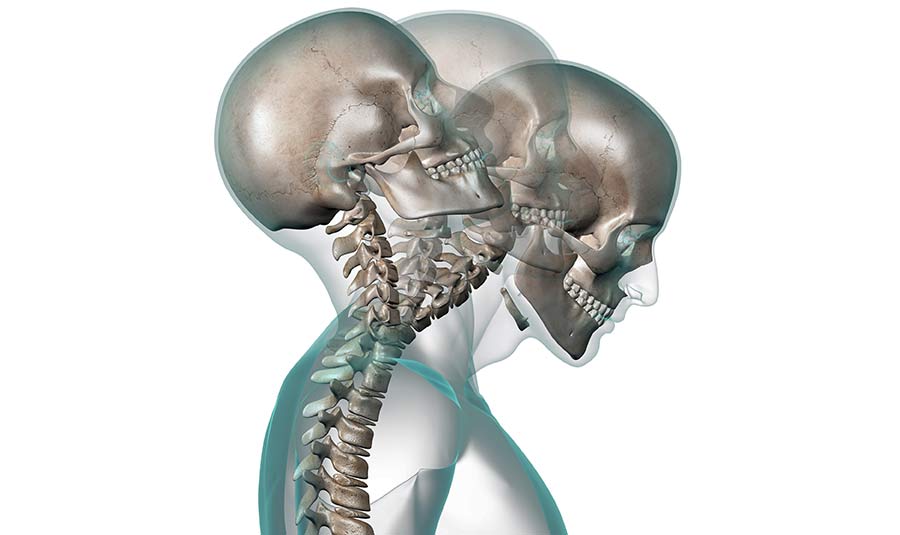Whiplash, Cervical Strain, Cervical Sprain
So many different words are used to describe a neck injury, especially after an accident. An “acceleration-deceleration” motion to the neck, typically after a collision was almost always called a whiplash injury. This term, along with the diagnosis of Whiplash Associated Disorder (WAD), has been used less and less over the last few years. This is mainly because of the negative connotation the word whiplash has, especially in a courtroom.
Let’s talk…….
It is very hard to find a definition of whiplash that everyone agrees with. Most physicians agree that the whiplash movement has potential to cause injury. In an accident, if the forces are significant enough, you can find evidence of bone fractures, ligament tears, and disk herniations. Whiplash is usually associated with soft tissue injuries, and not associated with any x-ray or MRI defined structural disruption. This is why a cervical sprain or strain is used more, as it is a description of the injury along as a diagnosis.
When seeing a patient after an auto accident with complaints of neck pain, our first concern is usually to make sure there is no significant structural issue that puts that person at risk for a more permanent injury. Is there any numbness, weakness, or reflex changes? Is there significant point tenderness to specific bones? If so, we need to make sure there are appropriate imaging studies to make sure there are no fractures. If there are significant increases of pain, or developing nerve sensations with motion, sometimes flexion-extension x-rays are necessary to make sure there are not instability issues. If there are any associated issues with walking, or bladder and bowel control, we need testing to make sure there is no potential catastrophic nerve/spinal cord injury. And finally, we need to make sure there are not co existing factors such as tumor, infection, or osteoporosis that makes the forces of the accident that much more significant, causing a more devastating injury.
What if The Tests are Inconclusive?
If the more serious situations are no longer a concern, and the testing does not show any significant structural problems, then the neck complaints with associated pain, loss of motion, and sometimes headaches are considered a WAD. And, because the testing did not show any significant structural problems, that information can be interpreted differently, depending on your perspective.
Because there is no diagnostic evidence of injury, physicians will rely on the patients complaints. This can lead to over treating of the problem. Unfortunately, many of the things we offer, often do not improve the situation. Narcotics can lead to addiction. Physical therapy or chiropractic care can be effective but are potentially expensive. We often see patients that have had up to a hundred chiropractic visits and say “yeah, they really didn’t work”. The use of stretches, NSAIDS, mild muscle relaxers, and a combination of PT/DC treatments for up to 3-4 months is reasonable. A small subset of patients will still complain of pain, but the vast majority do recover.
We rarely use the term whiplash. We may say the person had a neck sprain/strain and characterize it as a soft tissue injury. We may believe the injury is permanent, and if so we would argue the person had a significant complaint of pain, immediately after the accident, with significant restriction of motion, and documented spasm, with a consistency of the complaint for over a 6-8 month period.
https://www.ncbi.nlm.nih.gov/pubmed/10770984
Last modified: December 11, 2020










